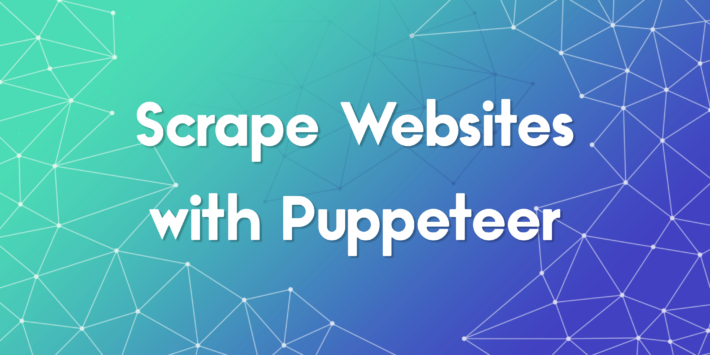What is Data Sourcing: A Beginner Guide in 2025

Data is more valuable than ever in 2025. Whether you are a digital marketer analyzing trends, a developer building automation workflows, or an SEO strategist uncovering keyword patterns, understanding what is data sourcing is a crucial first step. In this guide, we will explore what data sourcing truly means, how it works in practical scenarios, and which tools and proxies can help streamline the process. You will gain insights into practical methods, industry use cases, and the evolving role of proxies like ProxyTee in modern data acquisition. By the end of this guide, you will be equipped to start sourcing data efficiently and ethically.
Understanding What is Data Sourcing
At its core, data sourcing refers to the process of identifying, collecting, and organizing data from various internal or external sources for use in analysis, decision-making, or product development. In 2025, with growing emphasis on personalization, automation, and real-time insights, companies rely on accurate data more than ever.
There are two primary types of data sourcing:
- Internal data sourcing involves extracting data from within an organization, such as CRM databases, app analytics, or internal APIs.
- External data sourcing focuses on gathering publicly available or purchased datasets from third-party platforms, public APIs, or web scraping.
Knowing what is data sourcing helps in designing systems that are compliant, fast, and efficient. For anyone dealing with automation or competitive research, this understanding becomes foundational.
Why Proxies Are Essential in Data Sourcing
Modern data sourcing is often automated, especially when collecting large datasets from public websites or APIs. However, websites implement geo-blocking, IP bans, or rate limits to prevent excessive or unauthorized access. This is where rotating residential proxies come in.
A solution like an unlimited residential proxy enables users to access millions of residential IPs while remaining anonymous and bypassing common restrictions. ProxyTee, for instance, provides unlimited bandwidth and a global IP coverage network, making it ideal for consistent and secure data sourcing operations.
Here is a quick example in Python using a proxy:
import requests
proxies = {
"http": "http://username:password@proxytee.com:port",
"https": "https://username:password@proxytee.com:port"
}
response = requests.get(
"https://example.com",
proxies=proxies
)
print(response.text)
Real-World Use Cases for Data Sourcing in 2025
To better understand what is data sourcing in a business context, here are several real-world applications:
- Market Research: Brands analyze competitor pricing, reviews, or product listings using web scraping tools powered by proxies. With auto-rotation and vast IP pools, the scraping remains uninterrupted and discreet.
- SEO Intelligence: Marketers use data sourcing to pull SERP results or keyword rankings across regions. This requires continuous proxy rotation, which is simplified by ProxyTee’s simple API integration.
- Content Aggregation: News sites and apps source trending topics or articles across platforms to provide curated feeds. With multiple protocol support, developers can adapt to various endpoints easily.
- Lead Generation: B2B companies often scrape directories or social platforms to build prospect lists. Proxies ensure this process remains scalable and ban-free.
- Academic Research: Data scientists gather structured data for machine learning training, often from large public data repositories requiring parallel requests through different IPs.
Tools and Technologies That Support Efficient Data Sourcing
Knowing what is data sourcing is only half the battle. The other half is having the right stack. Most developers and marketers today use the following components:
- Scraping Libraries: Libraries like BeautifulSoup, Puppeteer, or Scrapy allow programmable data extraction from web pages.
- Proxy Management Tools: ProxyTee’s simple and clean GUI makes managing ports and usage accessible even to beginners.
- Cloud Functions: Automate sourcing tasks with scheduled scripts in AWS Lambda or Google Cloud Functions for periodic collection.
- Databases: Store your data in structured formats like PostgreSQL or NoSQL solutions like MongoDB depending on project needs.
As data volumes grow, proxy bandwidth often becomes a limiting factor. ProxyTee solves this with unlimited bandwidth options included in all their pricing plans. That means you can scrape or collect at scale without worrying about throttling.
Data Sourcing Methods
Let’s discuss some of the main ways to collect data. Each approach has its own value depending on specific needs.
- Open Data: Datasets made public by governments, non-profit organizations, or universities, this type of data allows for free and easy access to a range of resources for academic studies or market analyses.
- APIs: Application programming interfaces which make data exchanges between software systems and apps simpler, allows programmers direct access to public information, like on social media platforms for analytics and tracking data.
- Web Scraping: The process of obtaining data directly from web pages using tools that scan and navigate web data which help users overcome geo-restrictions.
- Commissioned Data: When data retrieval is done by a third-party expert, that means a project’s requirements and compliance standards are built right into the service.
- Custom Surveys: Data is retrieved through specially crafted questionnaires, or interviews which help define a custom scope or area of investigation.
- Purchased Datasets: Datasets acquired from vendors provide ready access to info without lengthy collection projects, an easy access point for all kind of information, or just to save some time during the early phases of a project.
What is Data Sourcing Without Ethics and Compliance
Responsible data sourcing involves staying compliant with data protection laws, website terms of service, and respecting robots.txt files. In 2025, GDPR and other regional regulations continue to evolve. ProxyTee helps reduce the risk by using real residential IPs, which are harder to detect and more compliant with location-specific access policies.
If you are sourcing public product data or pricing info, always ensure you avoid logging in or scraping behind authentication walls unless you have legal clearance. Public endpoints, open APIs, and aggregate data are the safest and most ethical ways to operate.
Getting Started with Data Sourcing Today
Now that you understand what is data sourcing and why it matters, you are ready to start building your stack. Begin small. Use simple scripts and open-source tools. Add a proxy provider like ProxyTee to make your operation stable and scalable. Evaluate your data storage strategy and automate periodic sourcing tasks. Over time, your workflows will get faster and more refined.
ProxyTee’s affordable pricing tiers make it accessible to teams of all sizes. Whether you are scraping 1,000 pages or 1 million, knowing how to scale while staying compliant is the real differentiator in 2025’s data economy.


